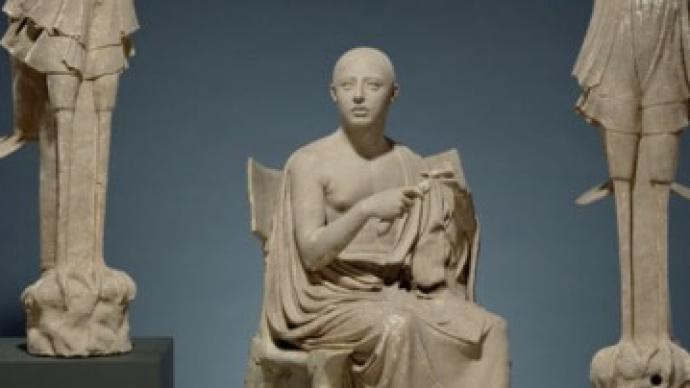
The Paper learned that the Getty Museum in Los Angeles recently announced the return of five cultural relics including "Orpheus and the Siren" (about 350 BC to 300 BC) to Italy; London's Horniman Museum earlier this month At that time, it confirmed that 72 precious Benin artifacts from its collection would be returned to Nigeria, becoming the first British government-funded institution to return Benin artifacts looted by British troops in 1897.
This once again drew public attention to the attribution of illegally stolen and looted cultural relics.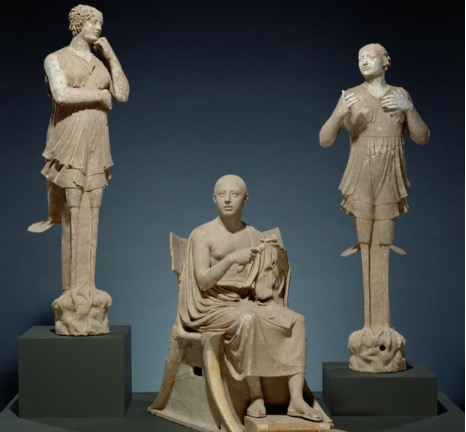
The Getty Museum said in a statement that after an investigation by the Manhattan Antiquities Trafficking Unit, the museum decided to return the artifacts to Rome. The museum is also working with the Italian Ministry of Culture to return four other artifacts, including three works purchased in the 1970s and an 1881 oil painting, The Oracle, by Camillo Miola (The Oracle), after scholars concluded that the artifacts had been illegally shipped out of Italy.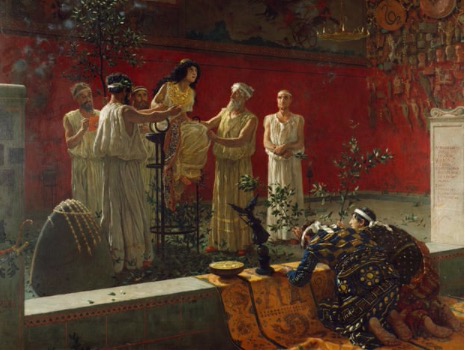
Meanwhile, a survey late last year showed that some 260 Etruscan, Greek and Roman artifacts that had been looted from Italy to U.S. museums, private collections and auction houses were being gradually returned. The repatriated artefacts are now on display at the Museum of Rescued Art, which opened in June, in the space of the National Museum of Rome at the Baths of Diocletian in Rome. Nearly 100 pieces of cultural relics (including statues, plates, coins, etc.) have been returned, and the first exhibition will end in October, after which more looted cultural relics that have been returned will be displayed instead.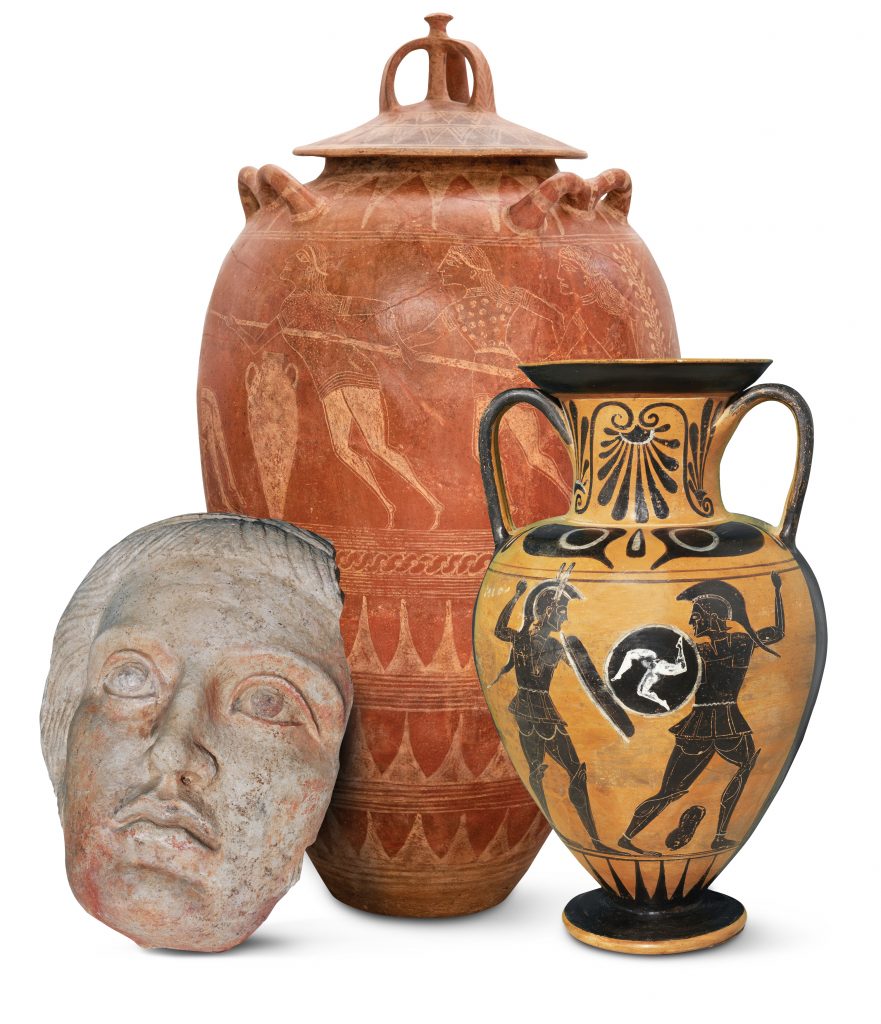
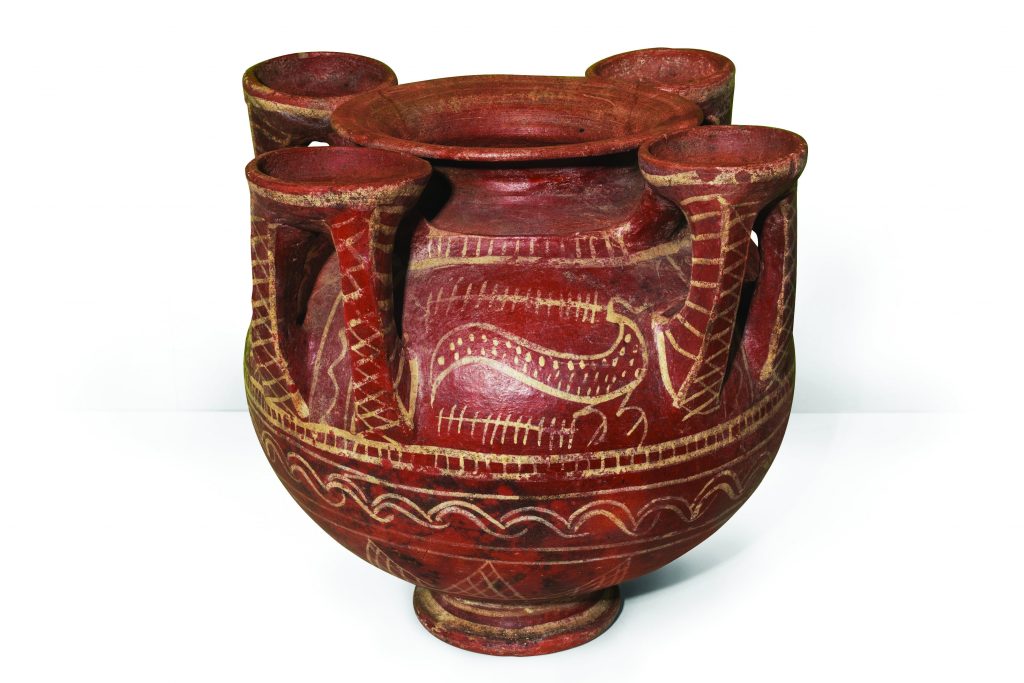
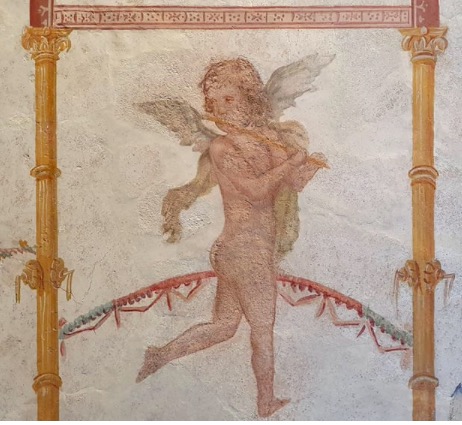
“It involves an entire network, starting with tomb robbers, who are in contact with dealers, who in turn negotiate prices with international traffickers. When tomb robbers illegally steal artifacts of significant artistic or historical value, traffickers will Take action," said Roberto Riccardi, head of Italy's cultural heritage protection team.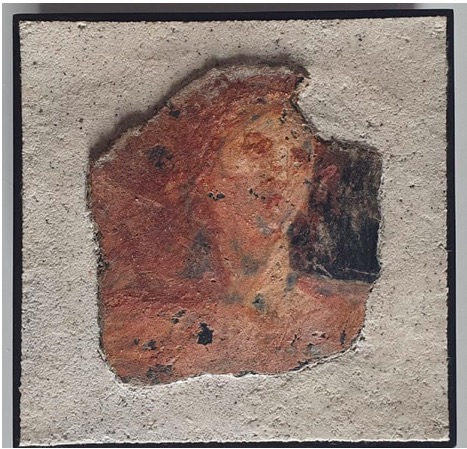

London's Horniman Museum also confirmed earlier this month the return of 72 precious artifacts including its collection of Benin bronzes to Nigeria. It is reported that about 10,000 items looted by the British during the attack on Benin are currently in the hands of 165 museums and numerous private collectors around the world.
"The evidence is very clear that the objects were obtained by force, and external consultation supports the view that it would be both ethical and appropriate to return their ownership to Nigeria," said Eve Salomon, director of the Horniman Museum. Salomon) said.
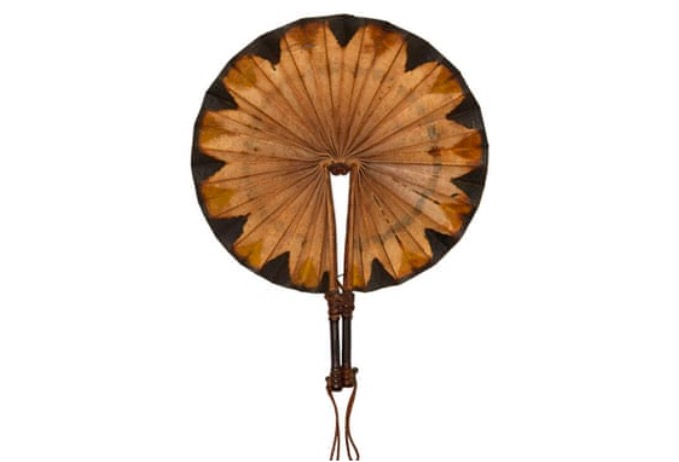
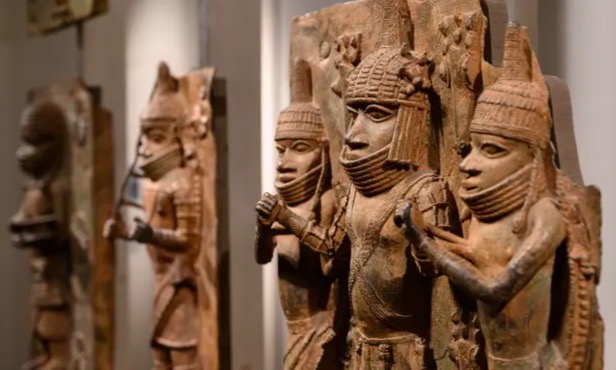
This once again drew public attention to the attribution of illegally stolen and looted cultural relics.

The Getty Museum returns three statues in Italy called Orpheus and the Siren.
This time, a group of three life-size clay sculptures "Orpheus and the Siren" (c. 350-300 BC), returned by the Getty Museum in Los Angeles, depict a seated man and two men. The Siren, a Greek mythology, was bought by John Paul Getty in 1976 from a now-defunct Swiss private bank. They are believed to have come from the Taranto region in southern Italy's Puglia region and have been on the list of stolen artifacts in Italy since 2006.The Getty Museum said in a statement that after an investigation by the Manhattan Antiquities Trafficking Unit, the museum decided to return the artifacts to Rome. The museum is also working with the Italian Ministry of Culture to return four other artifacts, including three works purchased in the 1970s and an 1881 oil painting, The Oracle, by Camillo Miola (The Oracle), after scholars concluded that the artifacts had been illegally shipped out of Italy.

Camilo Miola, The Oracle
Timothy Potts, director of the Getty Museum, said: "We value our strong and productive relationship with the Italian Ministry of Culture, as well as with academic colleagues across Italy in the fields of archaeology, conservation, curation and more, Together, they will shoulder the mission of advancing the protection of ancient cultural heritage."Meanwhile, a survey late last year showed that some 260 Etruscan, Greek and Roman artifacts that had been looted from Italy to U.S. museums, private collections and auction houses were being gradually returned. The repatriated artefacts are now on display at the Museum of Rescued Art, which opened in June, in the space of the National Museum of Rome at the Baths of Diocletian in Rome. Nearly 100 pieces of cultural relics (including statues, plates, coins, etc.) have been returned, and the first exhibition will end in October, after which more looted cultural relics that have been returned will be displayed instead.

A collection of artifacts on display at the Rescued Art Museum.
"The distribution, sale or illegal export of stolen art and archaeological objects constitutes a major loss to a country's cultural heritage, historical memory and expression of collective values." Dario Franceschini, Italian Culture Minister Franceschini said, “Cultural heritage has inherent intangible value, and it is often the target of illicit trafficking and material destruction. It is no coincidence that in international conflicts, aggressors frequently and deliberately destroy cultural heritage, going straight to the root of each other’s identities.”
Ritual with four handles. Rescued Art Museum Exhibits
Many of the returning cultures on display in the first round were secretly excavated and stolen by the so-called "tombaroli" in the early 1980s. Like all tomb robbers in history, they marked locations during the day and used long, pointed markers. Tools pierced through the dirt to find passages; dug into passages at night from abandoned buildings in the nearby area, before hammering ancient walls to snatch their booty.
A fresco from Villa Arianna in Pompeii.
The area near the ruins of the ancient city of Pompeii was once a place where tomb robbers were rampant. Among the relics brought back to Pompeii in 2020 were three frescoes cut from the walls of Villa Arianna and Villa San Marco - which once belonged to Stabia A noble family of , Stabiae is a historic site close to the main excavations of Pompeii. The artifacts were smuggled out of Italy in the 1970s, bought by antique dealers in the UK, the US and Switzerland in the 1990s and made their way to museums and auction houses. With the help of archaeological experts, police identified the objects in the private collection of a Milanese businessman, which had been restored to make the frescoes look better when they were found.“It involves an entire network, starting with tomb robbers, who are in contact with dealers, who in turn negotiate prices with international traffickers. When tomb robbers illegally steal artifacts of significant artistic or historical value, traffickers will Take action," said Roberto Riccardi, head of Italy's cultural heritage protection team.

Fragment of fresco from Villa San Marco in Pompeii.
In the past, looted artifacts also appeared in some large museums. In 1996, the Getty Museum in Los Angeles acquired artifacts, including frescoes illegally stolen from Pompeii, which led to the then-museum's director being charged by the Italian government with conspiring to traffic the looted art, a charge that was dropped in 2007. . In the same year, the Metropolitan Museum of Art in New York returned the illegally excavated and smuggled statues, vases and other artifacts. Although Middle Eastern countries have also become major markets for antiquities in recent years, most of Italy's stolen antiquities have gone to northern Europe and the United States.
A fresco (detail) probably from the Villa Arianna in Pompeii
It is reported that Italian cultural heritage (including works of art), valued at 986 billion euros, has always been the focus of antiquities dealers. The Italian Cultural Heritage Protection Group was established in 1969 and has since recovered more than 3 million stolen cultural relics. The team has built a database of around 1.3 million archives on stolen art and archaeological relics.London's Horniman Museum also confirmed earlier this month the return of 72 precious artifacts including its collection of Benin bronzes to Nigeria. It is reported that about 10,000 items looted by the British during the attack on Benin are currently in the hands of 165 museums and numerous private collectors around the world.
"The evidence is very clear that the objects were obtained by force, and external consultation supports the view that it would be both ethical and appropriate to return their ownership to Nigeria," said Eve Salomon, director of the Horniman Museum. Salomon) said.

Bust of Benin, one of the artifacts the Horniman Museum agreed to return to Nigeria.
Professor Dan Hicks, professor of contemporary archaeology at the University of Oxford, said the return of the artefacts from the Horniman Museum was "very significant". "It follows the announcement by Oxford and Cambridge universities in early August that they would return more than 200 Benin artifacts, and this is the UK's largest commitment to date," Hicks said.
A fan taken by British troops from Benin in February 1897.
Hicks, who lists 165 institutions that hold Benin bronzes in his book "The Savage Museum", hopes the move will increase pressure on the British Museum to change its stance on the return of objects. It is reported that the British Museum currently has 900 Benin cultural relics in its collection. On the issue of the return of cultural relics, the British Museum refused to talk about it, only mentioning Nigeria's "research and cultural exchange program". He added: “The strength of the museum collection is its breadth and depth, allowing millions of visitors to learn about world cultures and how they relate to each other over time — whether through trade, immigration, conquest or peaceful exchange.” But previously Germany plans to return thousands of Benin cultural relics, which has also inspired many museums.
Benin artifacts on display at the British Museum.
Note: This article is compiled from The Guardian, artnet, etc.Related Posts